
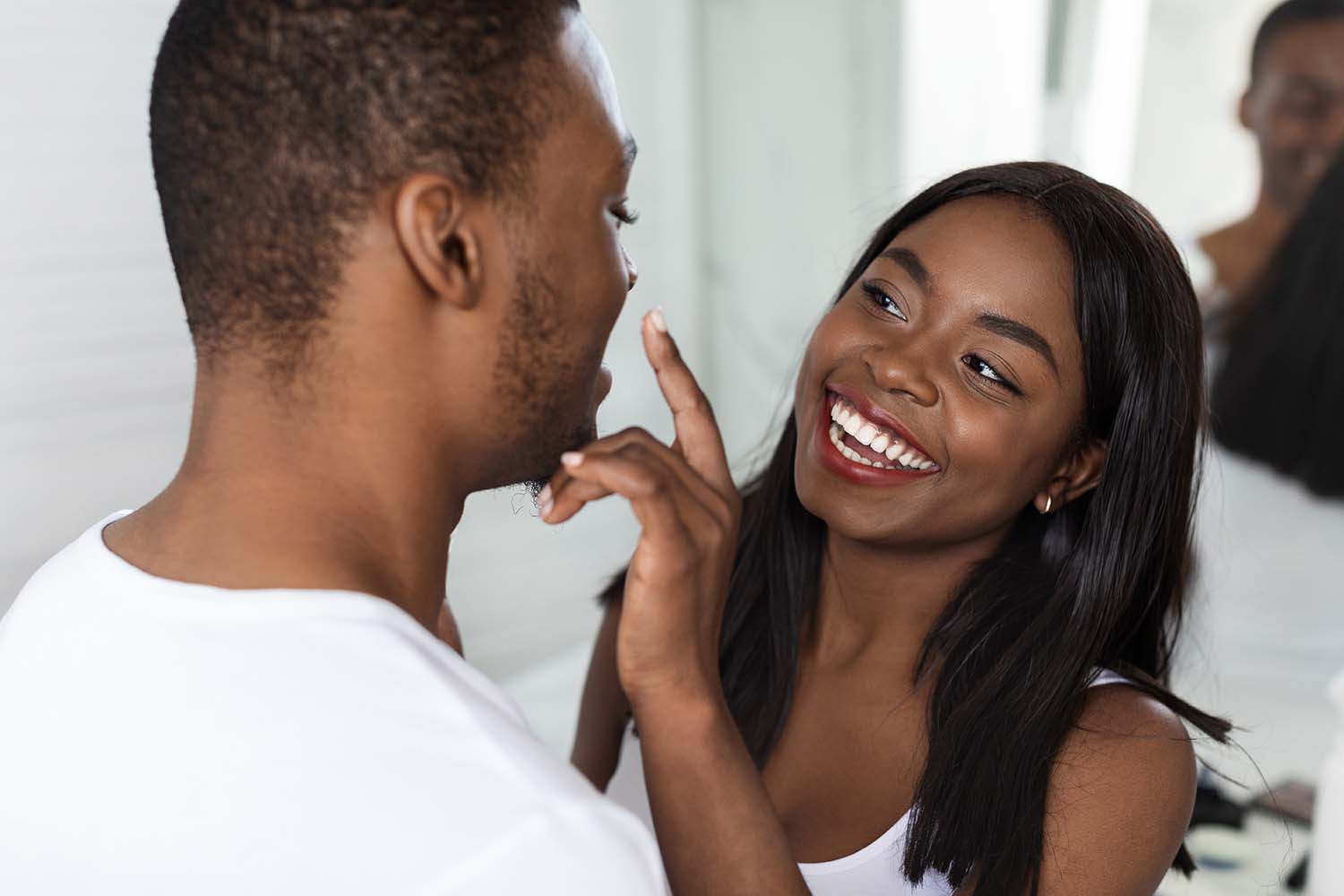
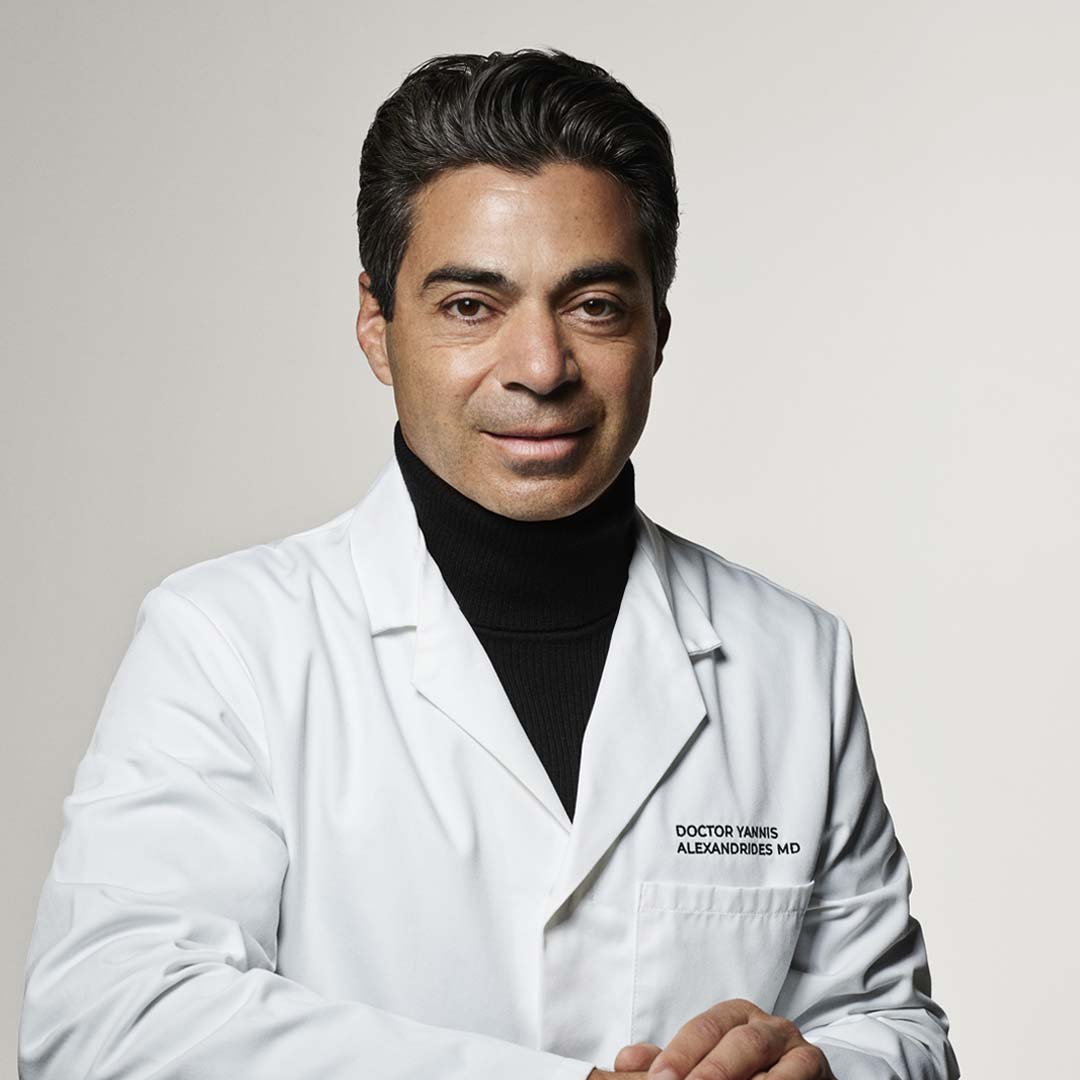
When first looking for a Rhinoplasty surgeon or nose specialist, you should ask yourself these three questions:
Credibility comes in lots of forms, from qualifications, proof of skill and even referrals from friends and friends of friends. Doing your research is important as many of us have heard about cosmetic botch jobs performed by people who are not trained professionally, or who do not have the expertise, certification or a legitimate doctorate.
The biggest thing when looking for qualifications is seeing if they are board-certified. Board certifications mean that your surgeon is a specialist and has met the nationally recognised standards for education, knowledge, experience, and skills needed to perform Plastic Surgery.
Dr Yannis Alexandrides MD FACS is our Rhinoplasty specialist at 111 Harley St. and is a triple board-certified Plastic Surgeon. He’s a member of the following boards:
Proof of skill is the other thing to look for, this can largely be demonstrated through their Rhinoplasty before and after photographs, along with Plastic Surgery reviews they have on platforms such as TrustPilot, RealSelf and Doctify.
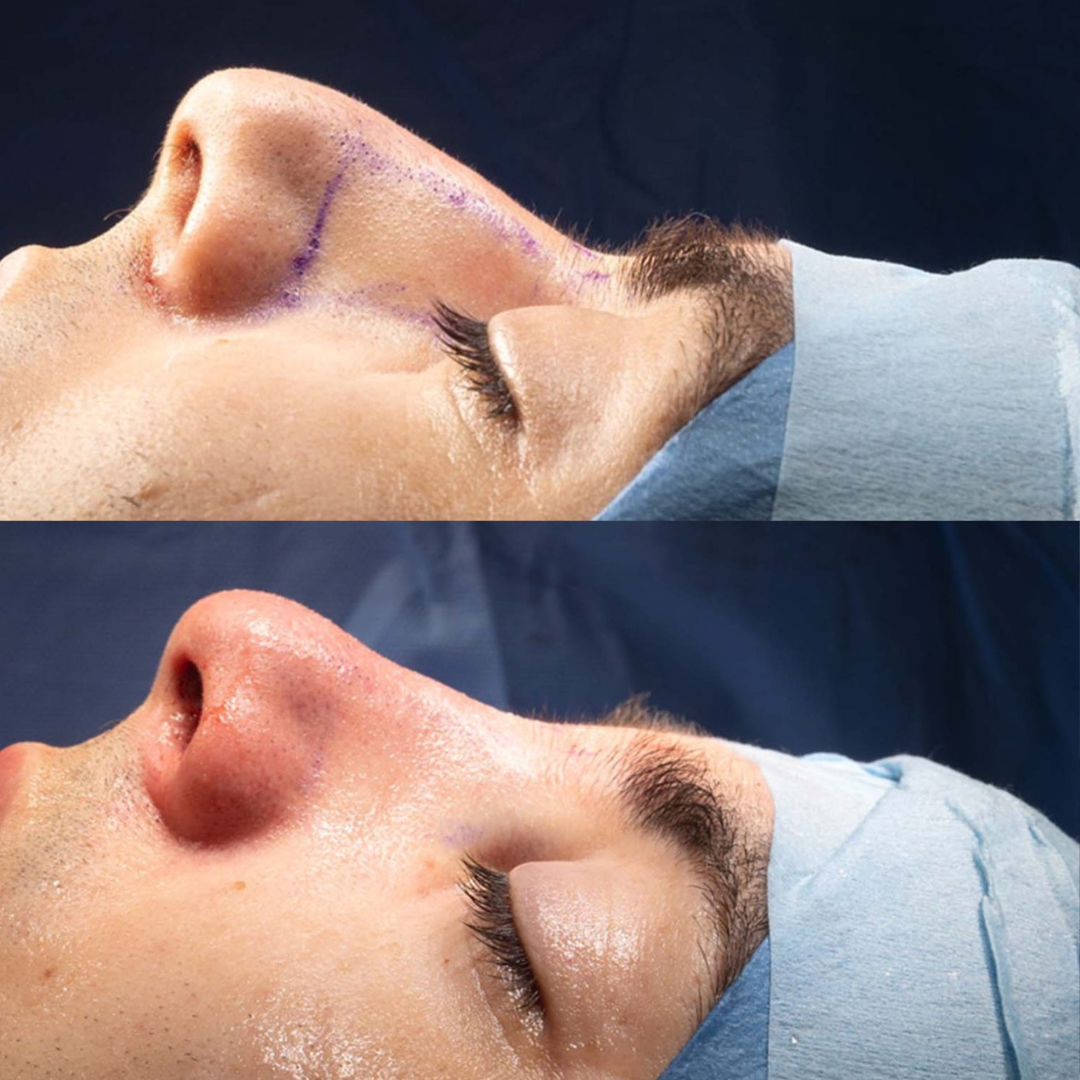
While experience not always correlate directly with ability, it’s always reassuring to know your doctor regulary performs nose jobs, from Ultrasonic Rhinoplasty, to Nose Tip Refinement, to Asian Rhinoplasty – whatever the type or surgery you desire. Practice makes perfect after all…
You can learn about Dr Yannis’ almost thirty years of surgery here and see the results that speak of his experience and skill themselves.
While Rhinoplasties have transformative effects, it’s important to discuss your expectations with your chosen Plastic Surgeon so you can get the most of out of your surgery.
Managing our patients’ expectations means you’ll come out of the surgery feeling happy with the results. We use a 3D Simulator so you can see what Dr Yannis plans to do to help you meet your goals.
When was your last Rhinoplasty procedure?
Can you tell me more about the 111 Harley St Patient Promise and what the policy is for Rhinoplasty revisions?
How many revisions have you had to perform and why?
What technique will be used for my Rhinoplasty procedure?
Will I be put under a local or general anaesthetic?
Are my expectations realistic and what kind of results can I hope to achieve?
When can I expect to see the final results?
BOOK NOW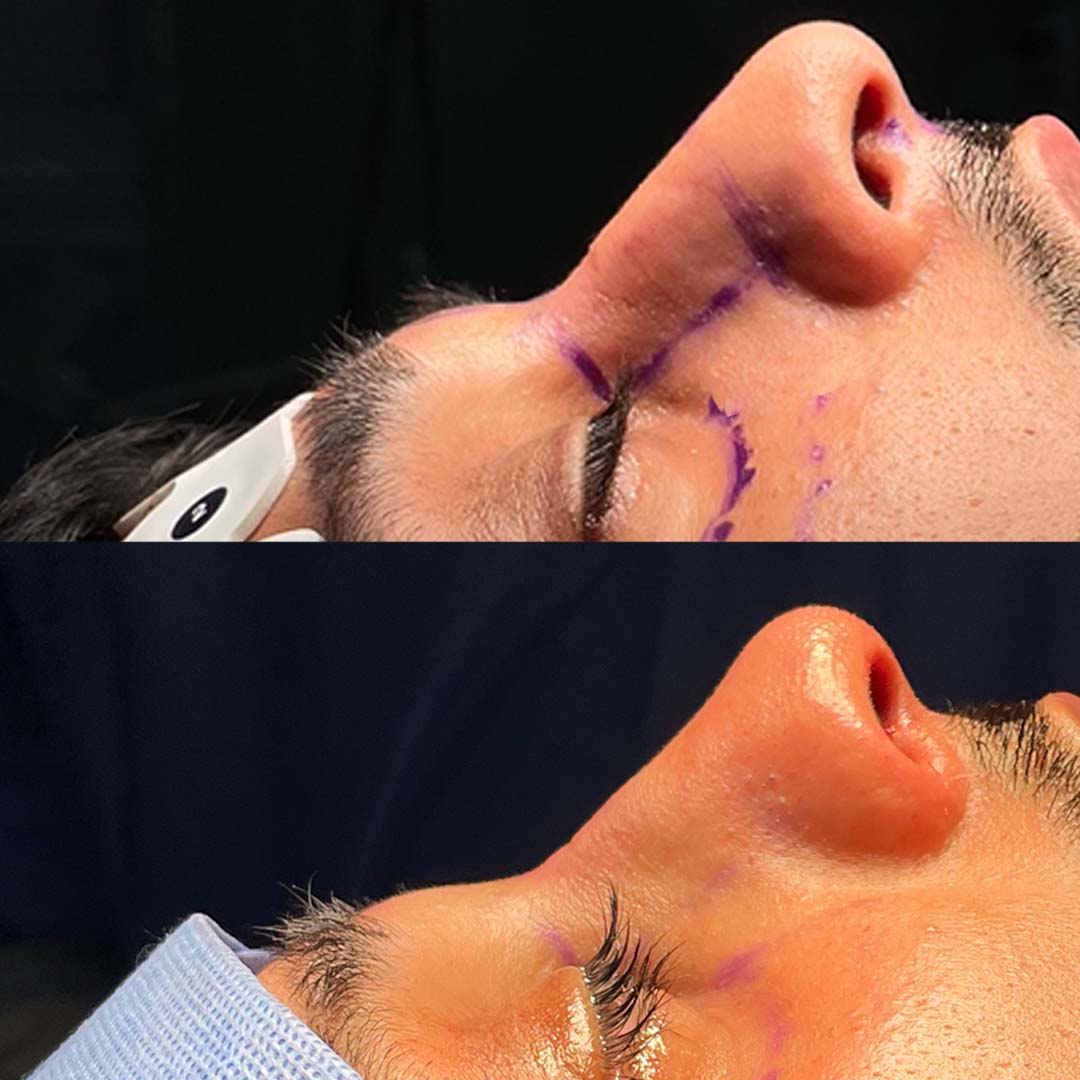
As the nose sits centrally on the face, it is often the first thing we look at when meeting somebody new or looking at a face in general, which is why Dr Yannis specialises in this type of surgery. Knowing the large role the nose plays in achieving a harmonious facial aesthetic and ratio, the best Rhinoplasty surgeons including Dr Yannis often apply the Golden Ratio concept to their Rhinoplasty cases to ensure a positive aesthetic outcome.
The Golden Ratio can be used to help determine the best nose shape for you and is a technique that approaches facial aesthetics and beauty through a mathematical lens. The Golden Ratio exists in all creative industries, in art and design especially, and can be traced back to Ancient Greece (perfect as Dr Yannis is the Greek Plastic Surgeon on Harley Street!) – where it was originally called the ‘Divine Proportion’. This proportion was established as a ratio of 1:1:618. So, when applied in Plastic Surgery, a ‘divine proportion’ is that your nose takes up 1/6 of your face.
Of course, this is not a golden rule, no matter what the name ‘golden ratio’ implies – however it can be useful to help you decide which Rhinoplasty is right for you or what part of your nose you’d like to change. For example, depending on your concern, there are some suitable Rhinoplasty options.
Dr Yannis will be able to expertly analyse your appearance and outline the best course of action to achieve your ideal shape, projection and profile.
The operation usually requires general anaesthesia but we can also offer local anaesthesia for minor procedures such as Tip Refinement. Depending on your needs, the surgical approach will vary. This might include:
Keep reading to learn more about the types of Rhinoplasty.
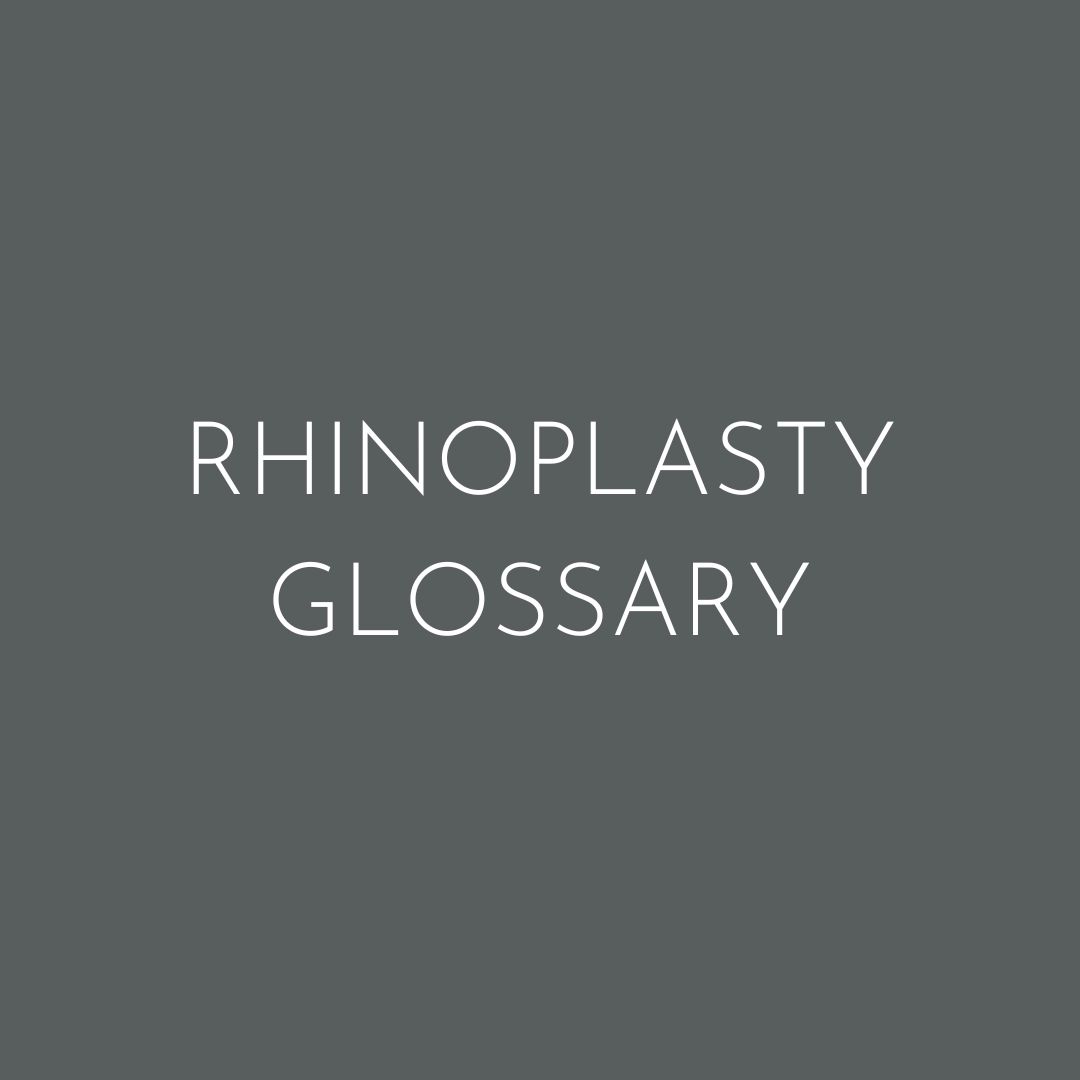
✍ Alar Reduction: Changes to the width and base of the nose and nostrils.
✍ Atraumatic: Causes no trauma to the bone.
✍ Augmentation Rhinoplasty: Also known as nose correction surgery, this involves surgically altering the nose to improve the shape.
✍ Deviated Septum: When the cartilage that separates the nostrils is misaligned.
✍ Dorsum: The bridge of the nose.
✍ Dorsal Hump: A bump on the bridge of the nose.
✍ Lateral: Anatomical term meaning the side of the nose.
✍ Nasal Grafts: A type of natural structure made from cartilage to provide additional support.
✍ Nasal Tip: The most prominent and visible part of the nose.
✍ Nasal Valve Collapse: Collapse of the nostril(s) and alar tissues.
✍ Non-Surgical Rhinoplasty: A non-surgical option using strategically placed injectables, these are performed by our Aesthetic Doctor, Dr Ivona and have shorter-term results.
✍ Open and Closed Rhinoplasty: Rhinoplasty techniques. A Closed technique involves making incisions inside the nostrils for surgery. An Open Rhinoplasty means the surgeon will make a discreet incision across the septum allowing access for the procedure.

✍ Piezo: An ultrasonic tool used by the surgeon allowing greater precision.
✍ Posterior: Toward the back (opposite is anterior).
✍ Post Trauma Rhinoplasty: A procedure performed to the nose where there has been damage previously, often addresses changes to the shape or asymmetry.
✍ Preservation Rhinoplasty: A surgical technique that preserves as much of the natural structure of the nose as possible whilst achieving the patient’s surgical goals.
✍ Projection: How far the nose extends away from the plane of the face.
✍ Septorhinoplasty: Reshapes our nose and your septum (the cartilage that divides the two nostrils inside the nose). Can also improve breathing difficulties.
✍ Splint: A rigid supporting dressing used following Rhinoplasty surgery to help maintain the desired shape during the healing process.
✍ Tip Refinement: Surgical procedure that alters the size and shape of the lower third of the nose.
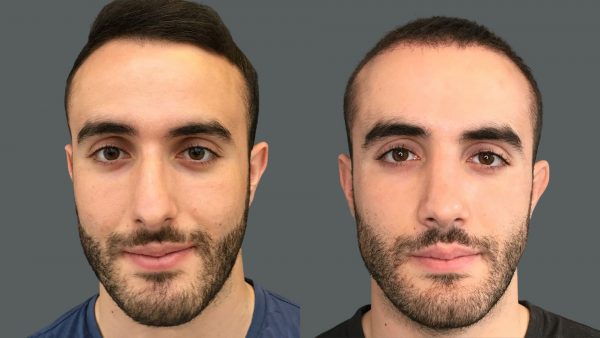
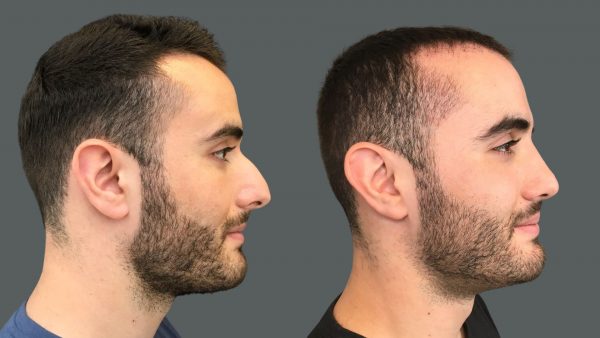
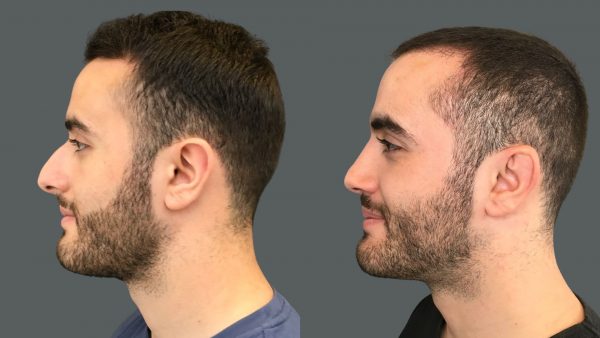
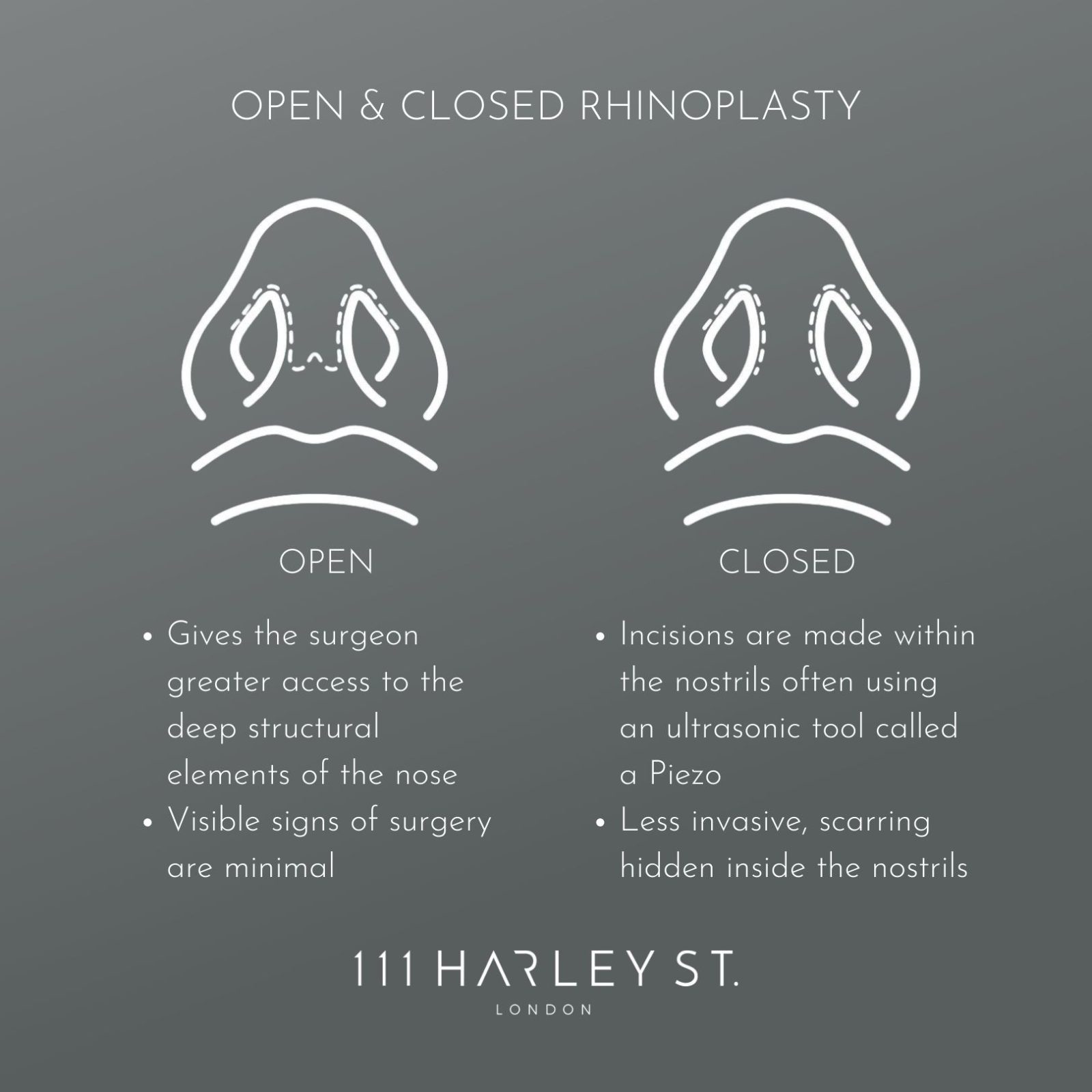
An Open / Closed Rhinoplasty is a type of Rhinoplasty technique that Dr Yannis uses.
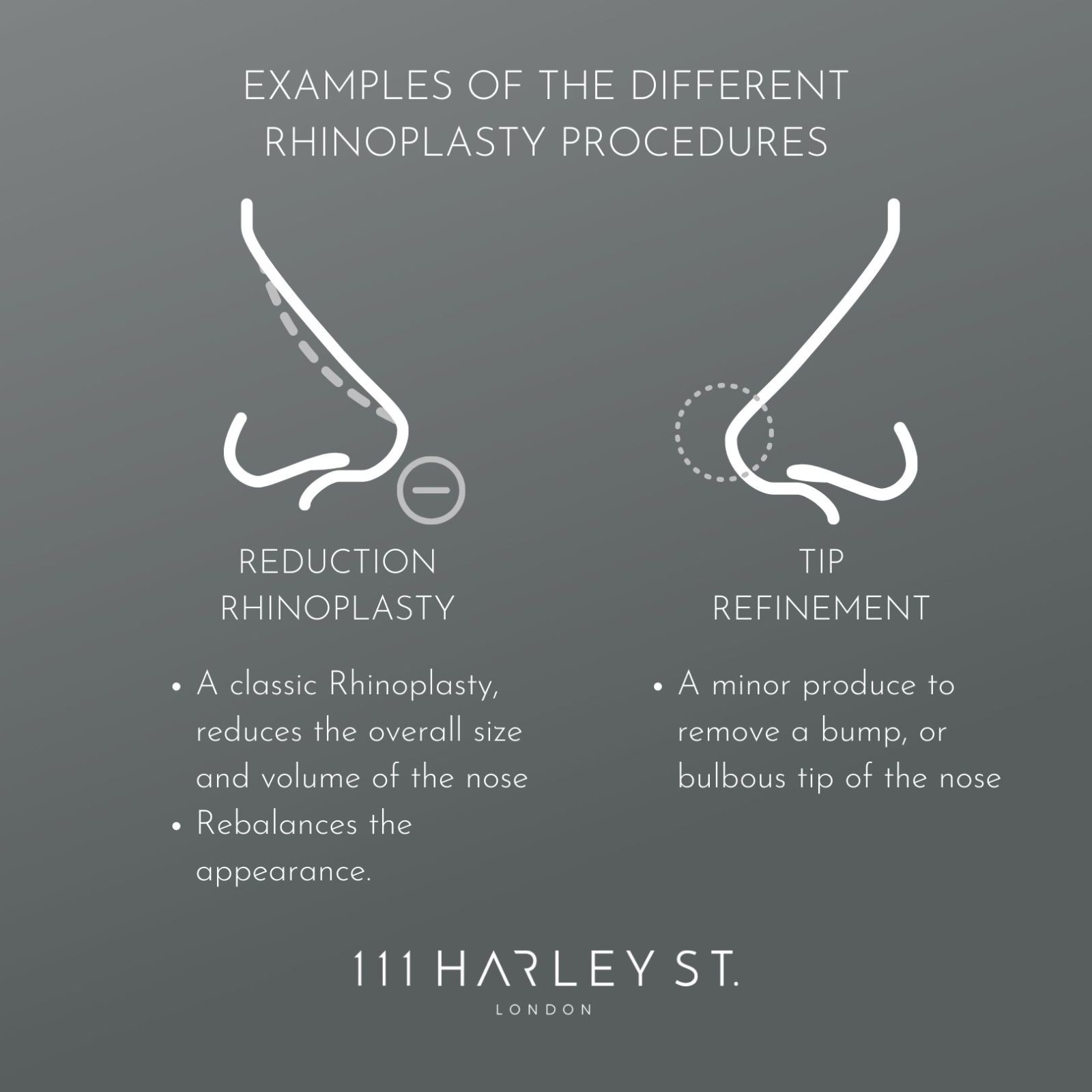
These are two common types of Rhinoplasty, a Reduction Rhinoplasty is a traditional Rhinoplasty that involves Dr Yannis reducing the projection of the nose which is ideal for hooked noses, or a nose that overwhelms your other facial features.
A Tip Refinement is a minor procedure that is ideal for those who aren’t looking for a full Rhinoplasty, or the downtime that comes with it, but are unhappy with the tip of their nose, which is often the most visible area of the nose. A nose tip surgery works on the lower third of the nose and can be performed in around 30-60 minutes, under local aesthetic, which means you’ll be awake throughout, but the area itself will be numbed.
So, you’d like to reduce just the tip of your nose, we recommend Nose Tip Surgery and this is a popular option because it preserves the rest of the nasal structure. It is ideal for those with a large or bulbous nasal tip.
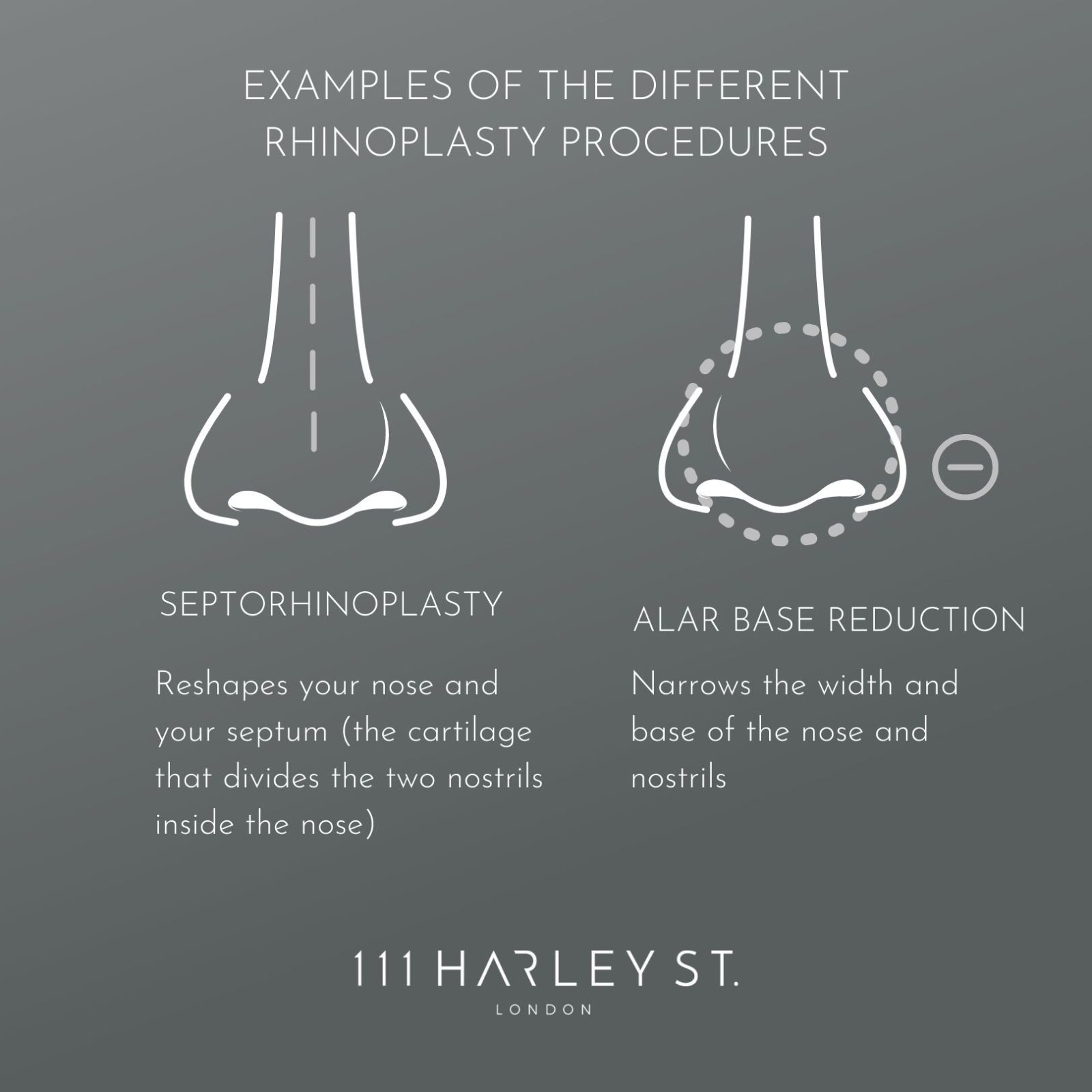
A Septorhinoplasty is more suited for those with an asymmetric, or wonky nasal bridge. It can also be used to correct a deviated septum – which is the medical term for when the thin wall that separates your right and left nasal passages — is displaced to one side. Usually this is the procedure we would recommend if you’d like to reduce the appearance of the bridge of the nose or a bump in the nose.
If you’d like to change the width of your nose, an Alar Base Reduction may be suitable to for you. An Alar Base Reduction focuses on reducing the width of the base of the nose and narrow the width of the nostrils. It is suitable for people that have an overly wide or flared nose which can contribute to the facial features looking unbalanced – so to ensure facial harmony is restored, sometimes performing an Alar Base Reduction with a Rhinoplasty can yield the most transformative results.
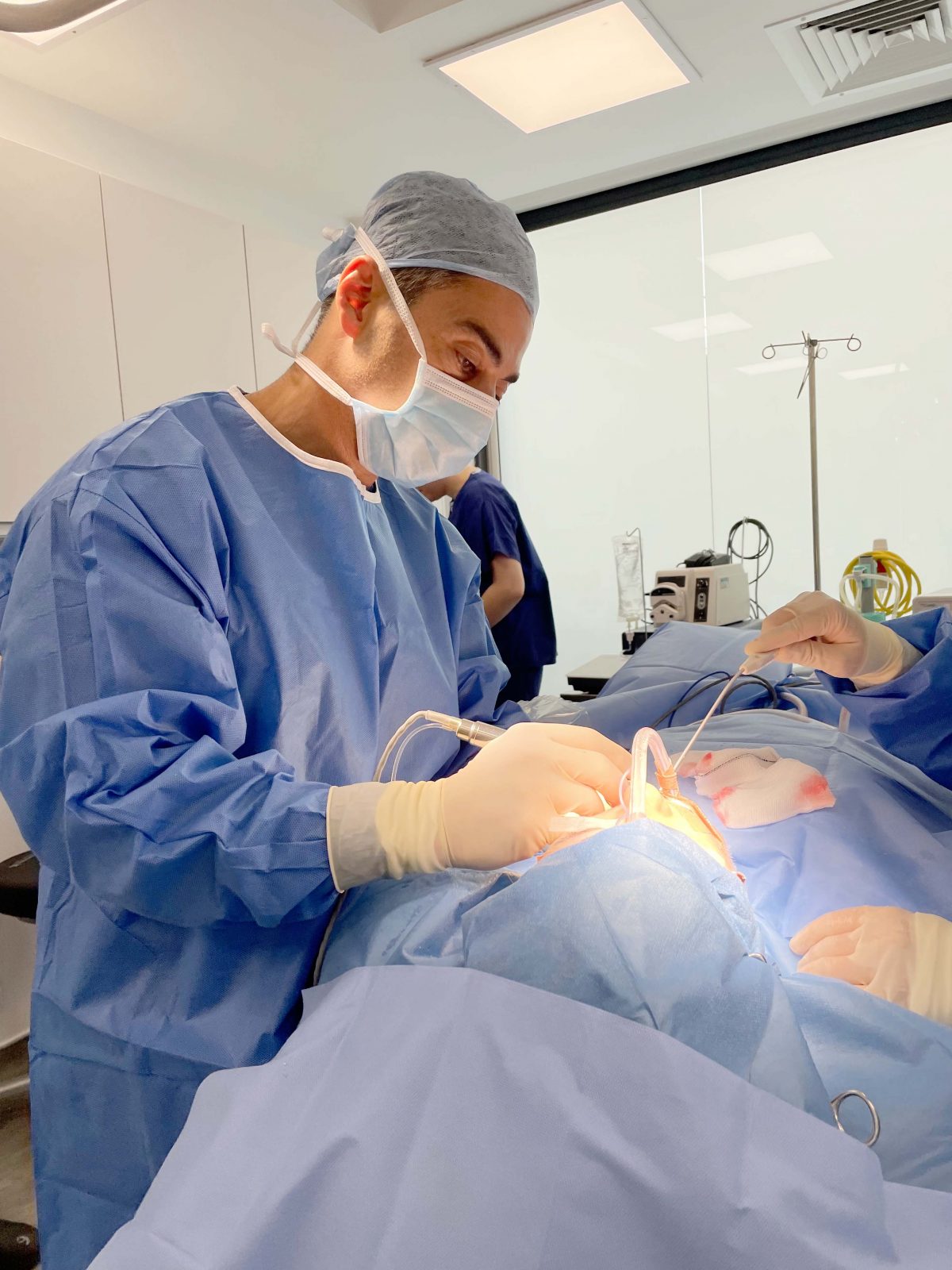
The techniques of a Rhinoplasty can vary depending on whether the nose job is performed in an Open or Closed Technique. A Rhinoplasty is performed using medical tools that work to augment the bone and cartilage of the nose. Some of the tools used during a Rhinoplasty will be a Piezotome, which is an ultrasonic device perfect for sculpting the bone. A more manual tool that works in a similar way to a Piezotome is a rasp. These come in all sizes and lengths and look a little like a file. This instrument offers more manual altering of the nose bone. Other instruments used to perform a Rhinoplasty are nasal scissors, a splint to make your nose cast, sutures, and suction tools.
A typical Rhinoplasty is performed under general anaesthesia meaning you’ll be asleep during your procedure. Before going under general anaesthetic, it is important not eat in the 6 hours prior to your surgery as this can increase risks. You should be able to drink water up to 2 hours beforehand, and if you have any other questions regarding anaesthetic, you can speak to our Head Anaesthetist, Dr Hish.
On the day of your surgery, you’ll arrive at your designated hospital clinic. We have partner hospitals in Battersea, Chelsea and Harley Street. You’ll be greeted by the team and taken to a private room to change into your surgical gown. Next, Dr Yannis will come and see you and discuss one last time exactly what you want to achieve from your surgery. He will then mark your nose and you’ll be ready to go into the theatre to have your anaesthesia administered
Your surgery will usually be performed in around two hours.
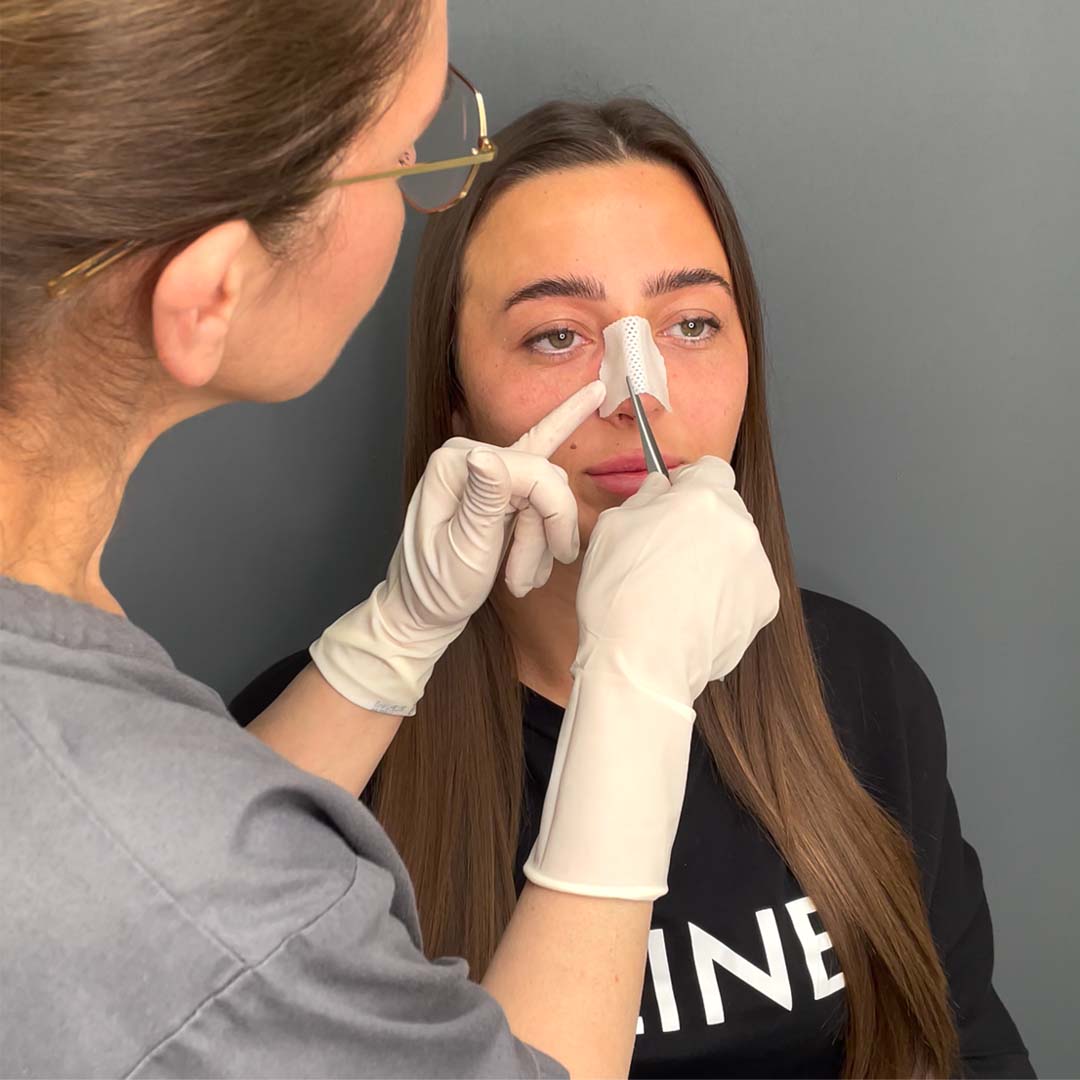
Immediately after the surgery, you may feel a little sleepy or nauseaous, which are all common side effects of general anaesthetic. However, this can vary from person to person and generally a lot of patients have very slight after-effects and will be ready to go home not long after the surgery.
However, while you may be feeling fine, we do advise that you ask a friend or relative to drive you home after your discharge from the hospital.
Dr Yannis will give you pain relief and potentially antibiotics to ensure your first few days are comfortable. Some of our patients don’t take the full course of pain relief and stop three days following their surgery, so this shows that recovery is already better than they expected.

Some common things not do after Rhinoplasty are:
Get the cast wet, you can wash your body and the face around the nose but do not directly wet your nose cast.
Drive. We advise you do not drive or operate any heavy machinery until your Harley Street surgeon says so.
Sleep with your head unelevated. If you can, sleep on your back for the first week or so, with your head raised.
Drink alcohol, smoke or undergo intense exercise. It is advised to avoid alcohol and smoking as this can bring out, or make any, bruising worse, cause more stress on the body and delay healing. Intense exercise can also do the same as well as cause potential pain and damage to the nose.
Blow your nose. While it is very common to feel very congested after a Rhinoplasty, please avoid blowing your nose as this can affect the internal stitches and knock things out of place. Once you have your first follow-up, around 7-10 days after, our Surgical Team will be able to remove your nose cast and you should be able to gently clean your nose with a saline spray or something similar.
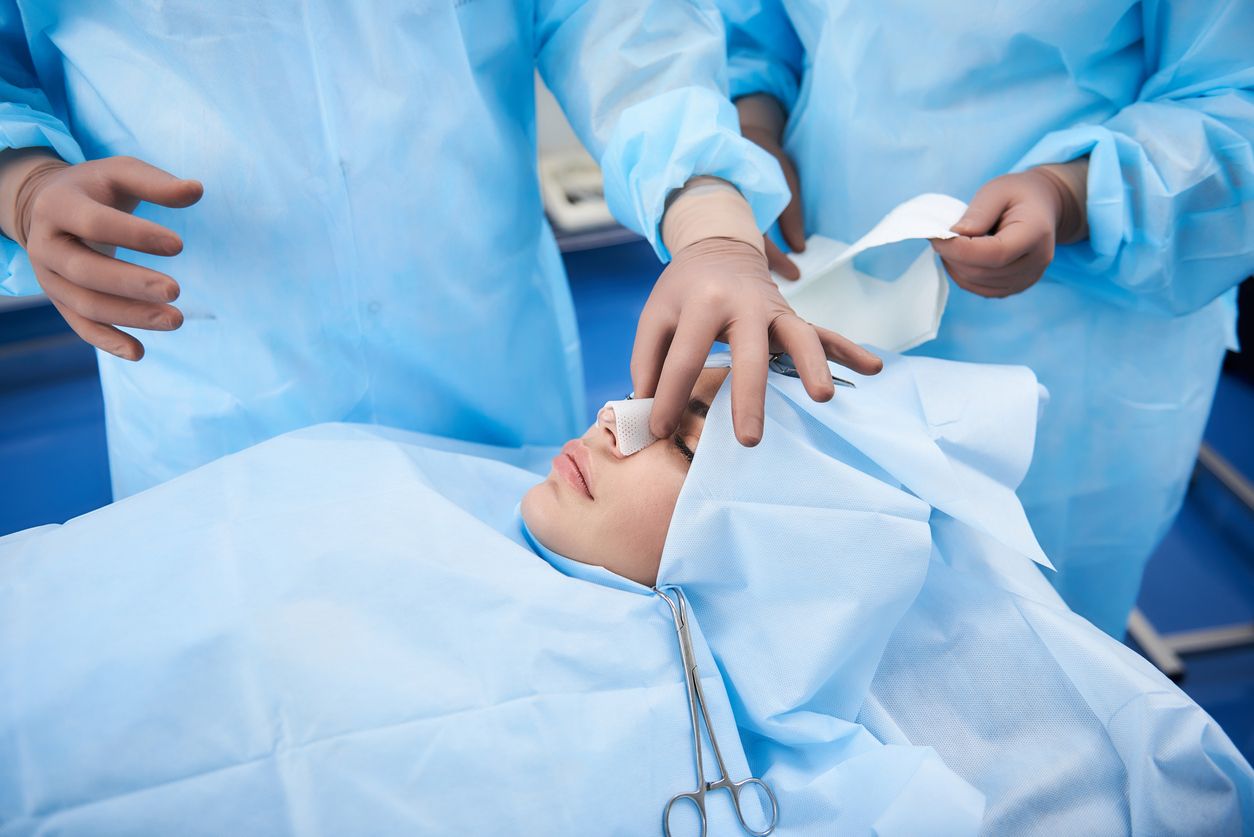
There can be stitches inside the nose which are dissolvable sutures and there can also be external stiches on the alar rim or across the septum. It can depend on the technique used by your Plastic Surgeon.

If anything, Rhinoplasty can improve breathing and a lot of Dr Yannis’ patients come to him because they not only want to change their nose but also want to improve their respiratory functions. By removing some of the lower lateral cartilage, or correcting a deviated septum, patients can breathe more easily.
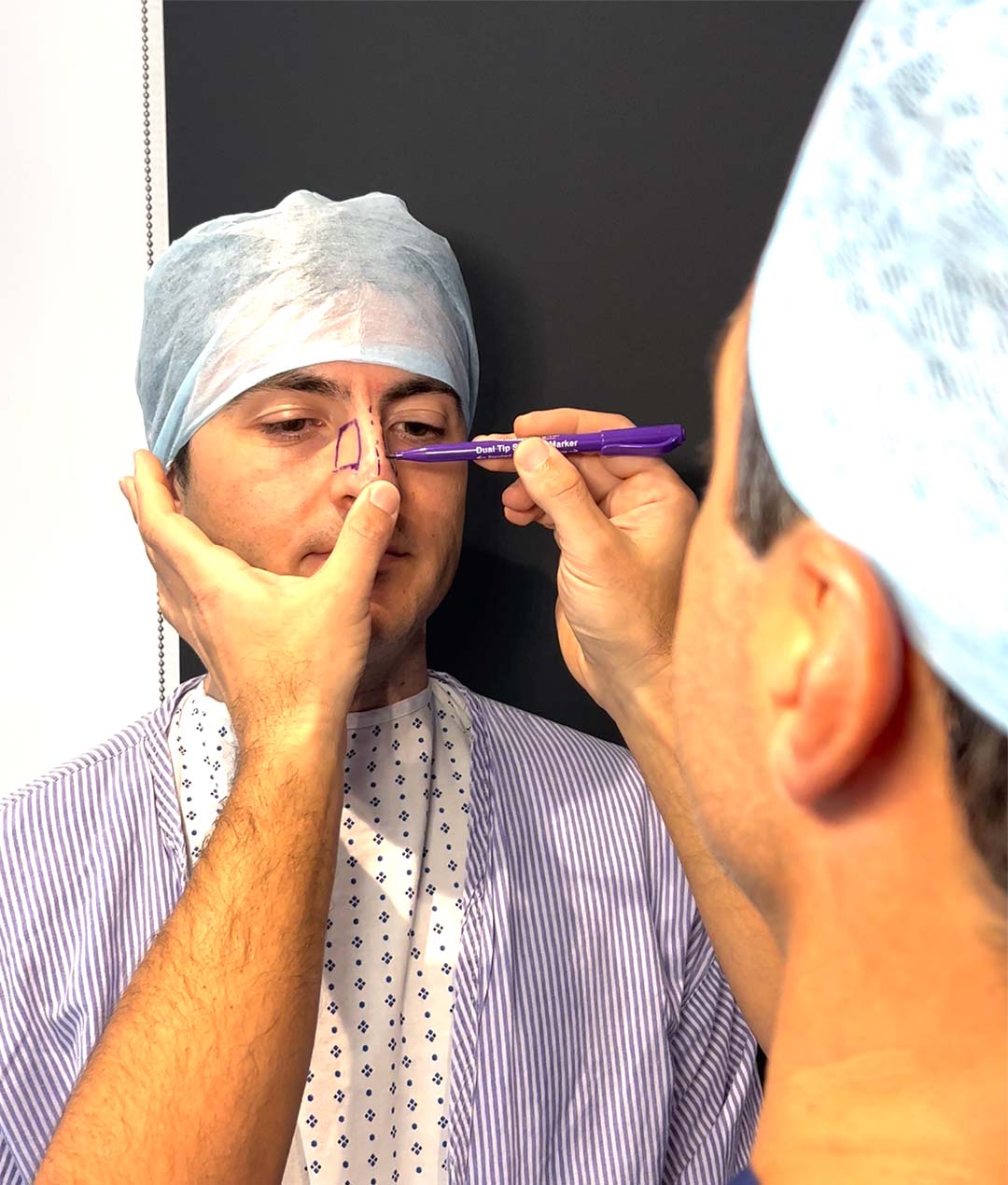
Some are. The ones made inside the nose gradually dissolve. The ones on the outside of the nose must be removed by a medical professional once the incision has completely healed.
For more information on Rhinoplasty, please get in touch with our team to book your initial consultation!
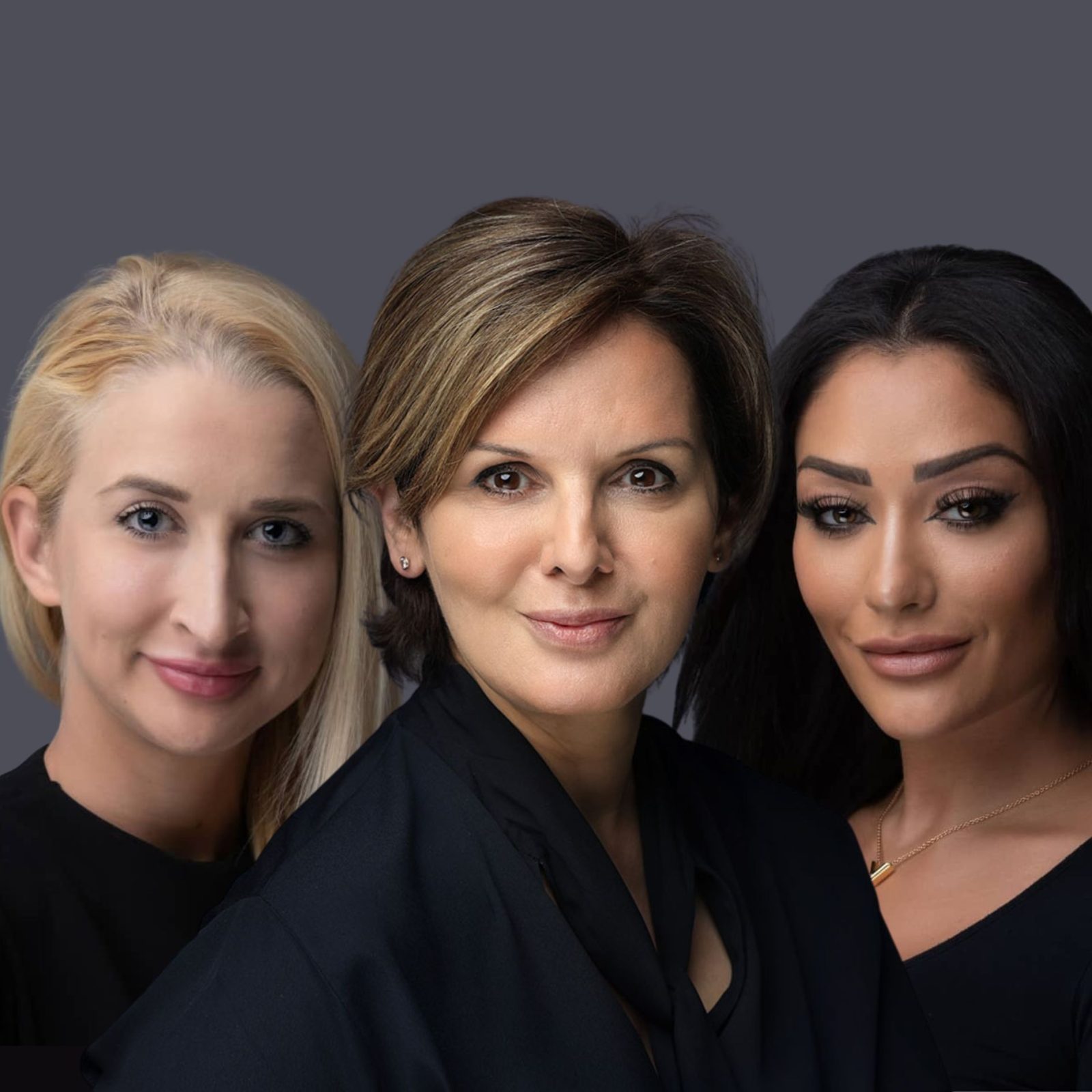
The surgery is just one part of the Rhinoplasty process, you can’t forget about before and after your operation and who will be there to guide you through how to best prepare your skin for its transformation.
Our Surgical Team on at our Harley Street clinic is small but amazing.
Your journey will begin with our Head of Surgical Department, and following your consultation with our Plastic Surgeon, you’ll meet with her, where she’ll inform you of the full process with her high levels of medical expertise. Chloe, our Admin Co-Ordinator, will then facilitate your journey and future appointments.
Zuzana is our Surgical Nurse who understands how nerve-wracking surgery can be, and will do everything she can to put you at ease and help enhance your skin post-surgery to help minimise scarring so you can enjoy your results faster.
Our aftercare program is completely bespoke, no post-operative care plan is the same, in the same way no Rhinoplasty is the same – but one element that never changes is our patient promise and our whole team being dedicated to helping you achieve the best results and the best experience. We also promise that in the unlikely circumstances that you require revision surgery, this will be carried out free of charge too.
Call to discuss Rhinoplasty costs on 0344 692 1111.
Call us now
Dr Yannis Alexandrides MD FACS is the Founder and Surgical Director of 111 Harley St.
An American and European board-certified Plastic Surgeon, Dr Yannis established the clinic in 2001. For almost two decades, 111 Harley St. has remained at the forefront of aesthetic innovation due to Dr Yannis’s tireless approach to medical excellence.
While well-versed across all surgical practices, Dr Yannis is world-renowned for his facial surgeries including, Rhinoplasty and Facelifts, having pioneered the latter into his signature ‘Y-Facelift’ technique.
Learn More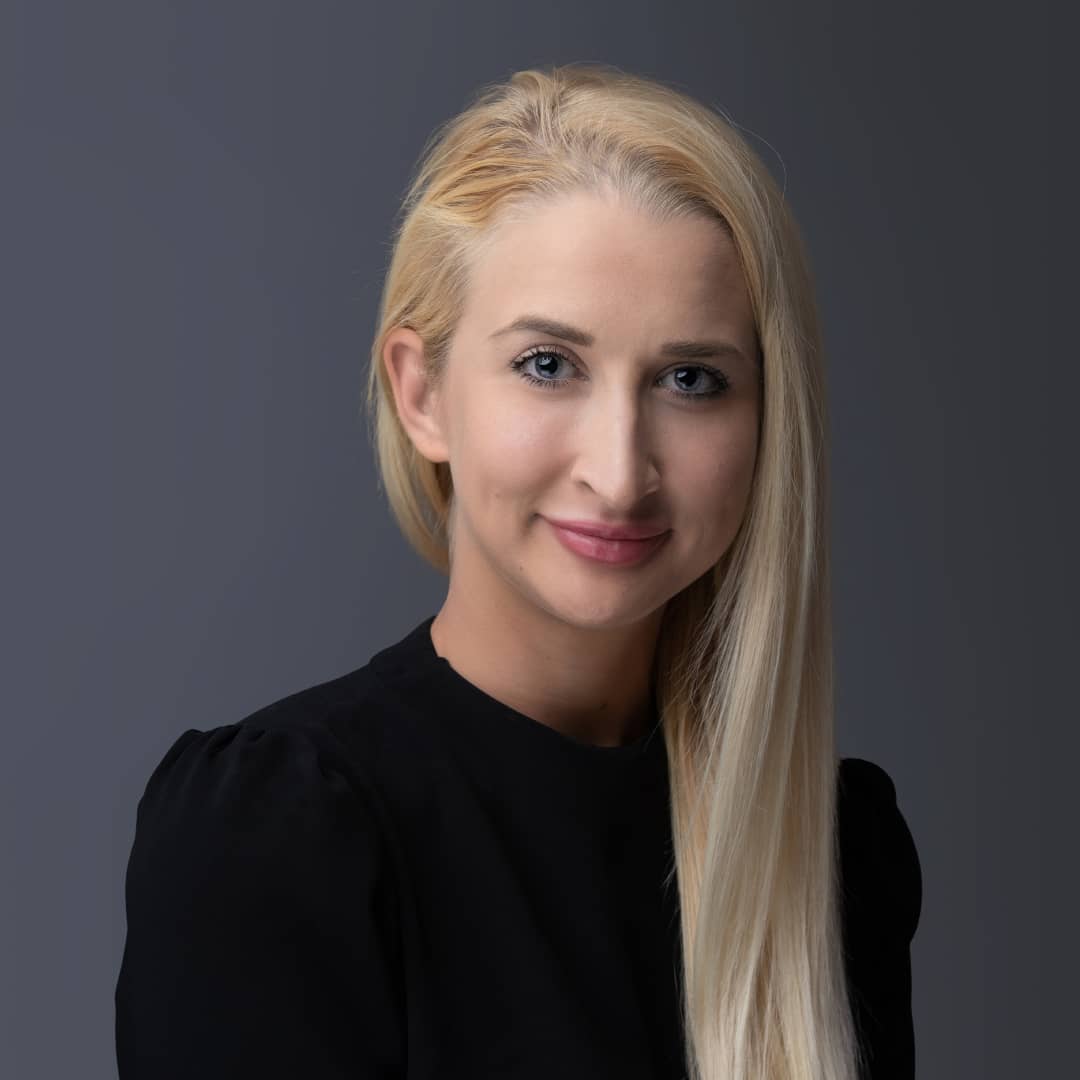
Chloe Bruton is our Admin Coordinator
As an Admin Coordinator at 111 Harley St., Chloe is the daily and trusted support running the surgical department.
Since 2012, Chloe is a committed, hard-working and integral part of the team as she always strives for optimal patient service and satisfaction. Organised and highly efficient, Chloe is the daily support at the clinic for any surgical appointments and operations.
Learn more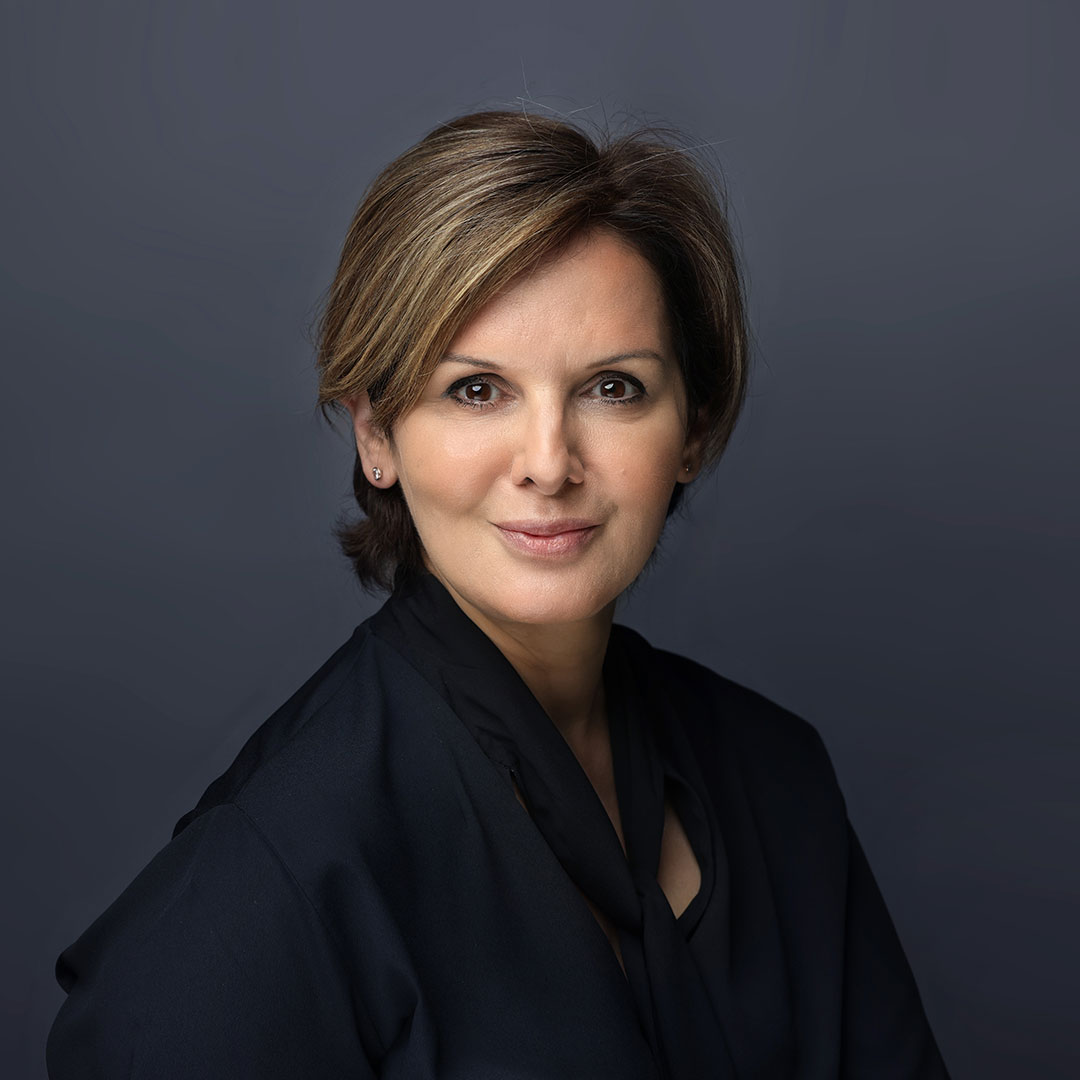
Zuzana Pavlovska is our Surgical Nurse
Completing her nursing studies in 2000 and working as registered Nurse in the UK since 2008, Zuzana has gone to be a stellar Surgical Nurse for a range of practitioners in Harley St. before joining 111 Harley St. With an eye for detail, knowledge, and practice in injectables, combined with her calm yet reassuring demeanour – Zuzana works closely with all surgical and non-surgical experts as well as patients for the smoothest of treatments.
Zuzana